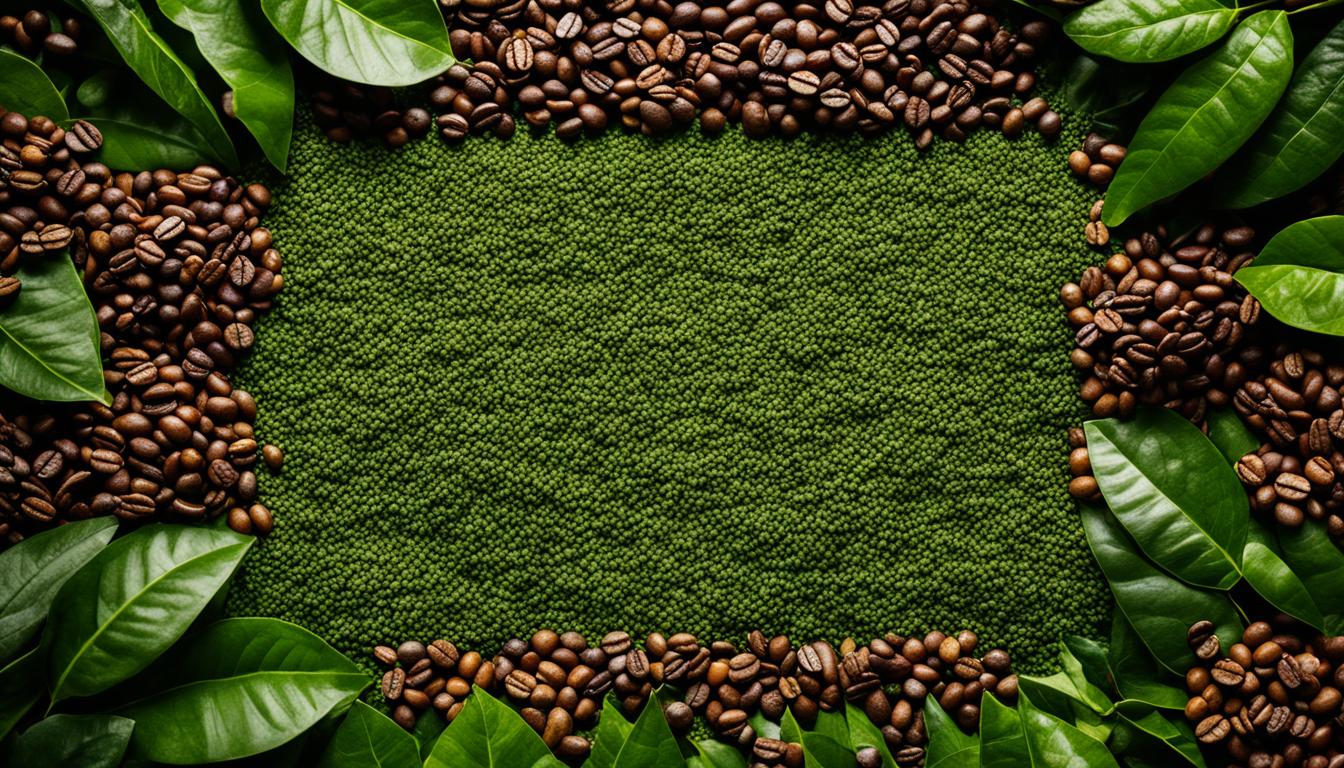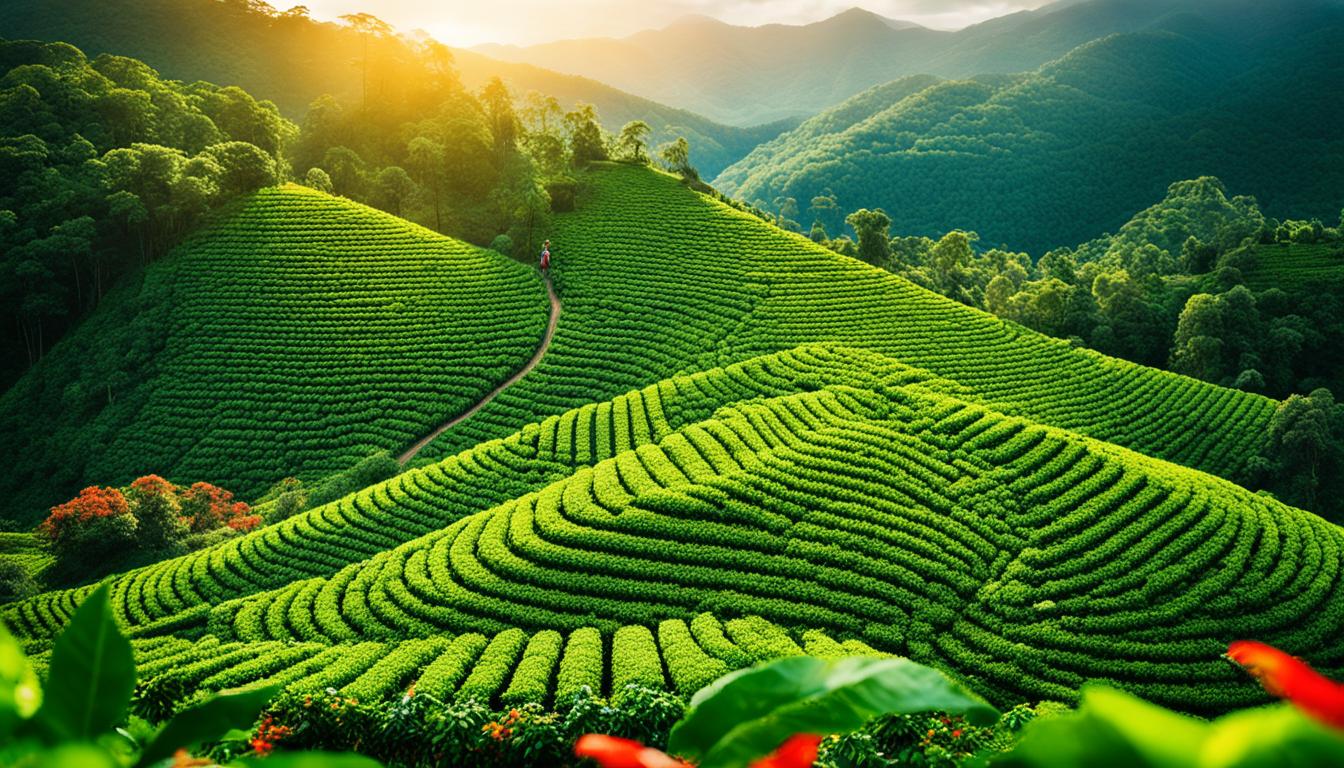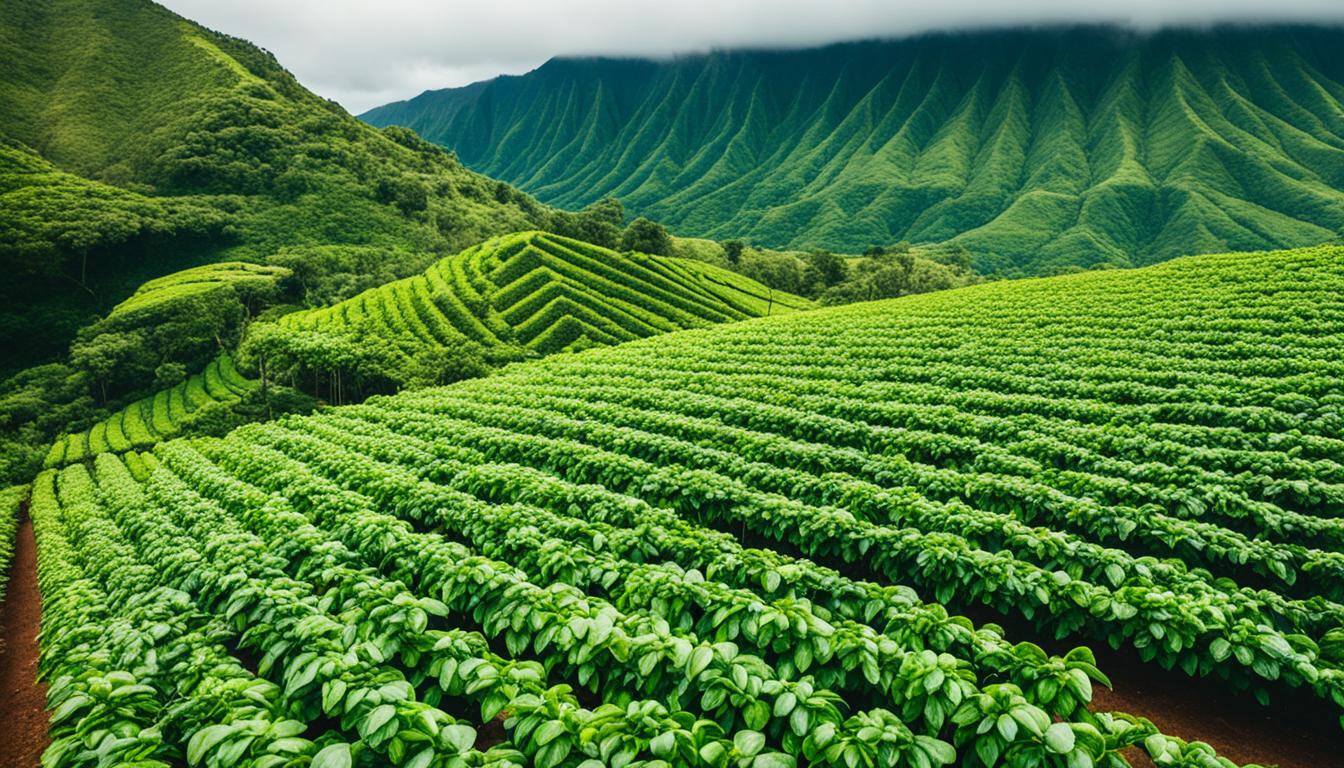Indonesia is renowned for its diverse range of coffee varieties, making it a true paradise for coffee lovers. With its unique flavors and characteristics, Indonesian coffee offers a delightful and exotic experience to those who appreciate a good cup of joe. From the rich and earthy Sumatran blends to the smooth and sweet Balinese coffee, there is something to suit every palate.
Indonesian coffee beans are known for their distinct and vibrant flavors, influenced by the country’s fertile volcanic soil and ideal coffee-growing conditions. The unique terroir imparts an array of tasting notes, ranging from chocolate and spices to citrus and floral undertones.
Some of the best Indonesian coffee varieties include the popular S795 and Tim Tim, which boast flavorful profiles with hints of maple syrup, brown sugar, and bold earthiness. In addition to these well-known options, there are also lesser-known varieties like USDA 762, Kartika, and Andungsari, each offering their own unique flavors and characteristics.
Indonesia takes great pride in its specialty coffee industry, with dedicated farmers cultivating and processing coffee beans with meticulous care. This commitment to quality and craftsmanship has made Indonesian coffee a favorite among coffee enthusiasts worldwide.
So, if you’re looking to explore the world of Indonesian coffee and indulge in unique and exquisite flavors, we invite you to join us on this journey as we delve into the top Indonesian coffee varieties and uncover the secrets of their exceptional taste.
Key Takeaways:
- Indonesia is home to a wide variety of unique coffee flavors and profiles.
- S795 and Tim Tim are popular Indonesian coffee varieties known for their distinct flavor notes.
- There are also lesser-known varieties like USDA 762, Kartika, and Andungsari that offer unique taste experiences.
- Indonesian coffee is cherished for its richness, earthiness, and exquisite flavors.
- Come with us as we explore the diverse and captivating world of Indonesian coffee.
S795 – A Reliable and Easy-to-Grow Coffee Variety
S795 is one of the most common coffee varieties in Indonesia, known for its distinct flavor notes of maple syrup and brown sugar. It was introduced to the Indonesian coffee sector in the 1970s from India and can be found in regions such as Bali and Toraja.
One of the reasons why S795 has remained popular is its ease of cultivation. With less demand for compost and the ability to grow at varying altitudes, it is recommended for farmers new to coffee farming. However, it is often regarded as producing a lower-quality cup compared to other varieties like Catuai.
S795 is a hybrid between Kent and the liberica species, giving it a strong root system and a mellow, less acidic flavor. Despite its reliability, it has a lower yield compared to some other varieties.
Tim Tim – A Resilient and Disease-Resistant Coffee Variety
When it comes to coffee varieties, Tim Tim, also known as Hibrido de Timor, stands out as a remarkable option. This Indonesian coffee is a natural cross between arabica and robusta varieties, resulting in a unique combination of flavors and qualities. Introduced in the 1950s, Tim Tim gained popularity for its exceptional resistance to coffee leaf rust and other diseases, making it a reliable choice for growers.
The Indonesian government played a significant role in promoting the cultivation of Tim Tim in various arabica growing regions. The adaptation of Tim Tim in specific regions, such as Gayo 1 in Sumatra and Kopyol in Bali, led to diverse regional flavor profiles.
As an arabica-robusta cross, Tim Tim exhibits characteristics from both parent varieties. It has a bold, thick body that can be reminiscent of the robusta’s strong flavors. This combination results in a versatile coffee with a wide-ranging flavor profile. Whether you prefer a smooth and chocolaty cup or a more intense and earthy experience, Tim Tim coffee can cater to different palates.
Besides its intriguing flavor profile, Tim Tim has also played a crucial role as a genetic source in breeding projects. It has been used to develop other notable varieties such as Catimor and Sarchimor, which further extend the range of flavors and qualities available in Indonesian coffee.
Overall, Tim Tim is a resilient and disease-resistant coffee variety that offers coffee enthusiasts the opportunity to explore unique flavors and enjoy a cup of coffee that combines the best qualities of arabica and robusta. Its versatility and adaptability make it a valuable addition to the rich world of Indonesian coffee.
Tim Tim Coffee Flavor Profile:
| Flavor Notes | Acidity | Body |
|---|---|---|
| Bold | Medium | Thick |
| Earthy | Low | |
| Rich |
USDA 762 – A Lesser-Known Coffee Variety with Unique Origins
Let’s delve into the fascinating story of USDA 762 coffee, a lesser-known variety with a remarkable history. Hailing from Ethiopia, USDA 762 made its way to the Indonesian coffee sector in the 1950s. Interestingly, its initial introduction led to confusion, as it was mistakenly identified as Geisha due to their shared origins in the same region. However, as time passed, both USDA 762 and Geisha underwent separate natural selections, resulting in distinct plants with distinct flavors and physical characteristics.
While USDA 762 was once abundant in Java and Sumatra, its popularity has waned compared to other well-known coffee varieties. It lacks a distinctive flavor profile that sets it apart from its counterparts. As such, USDA 762 is primarily grown at higher altitudes, where the concern for coffee leaf rust resistance is not as prominent.
Despite its decline in popularity, USDA 762 holds significant historical value in the world of Indonesian coffee production. Its unique origins and connection to Ethiopian coffee make it a noteworthy addition to the country’s coffee heritage.

Differentiating USDA 762 and Geisha
While USDA 762 and Geisha share a common Ethiopian origin, their separate natural selections have resulted in notable differences. Let’s explore how these two varieties differentiate from one another:
| Characteristic | USDA 762 | Geisha |
|---|---|---|
| Flavor Profile | Lacks a distinct flavor profile | Delicate and floral notes |
| Morphology | Distinct physical characteristics | Elongated and slender cherries |
As highlighted above, USDA 762 lacks the characteristic flavor profile found in Geisha, and its physical appearance differs as well. These contrasting features make each variety unique and contribute to their individual identities within the world of coffee.
Flavor Profile of USDA 762 Coffee
While USDA 762 coffee may not possess a distinct flavor profile, it offers a range of taste experiences depending on the brewing method and roast level. Generally, this variety exhibits mild and balanced flavors with subtle notes of acidity. The flavor profile may vary based on factors such as the terroir, altitude, and processing methods employed during production.
With its Ethiopian origins and unique characteristics, exploring the flavor profile of USDA 762 coffee is an exciting journey for coffee enthusiasts seeking new experiences.
Kartika – A Challenging Coffee Variety with A Troubled History
When it comes to Indonesian coffee, the Kartika variety has a unique story to tell. Also known as Kopi Arabika Tipe Katai, Kartika is a localized version of the popular Catuai variety. However, its journey has been fraught with challenges and difficulties.
Initially, Kartika was cultivated as part of a mass variety test. Unfortunately, it quickly became apparent that this coffee type had high fertilizer requirements and was particularly susceptible to pests and diseases. As a result, many farmers were ill-prepared to meet the demanding cultivation needs of Kartika coffee, resulting in widespread infections and a decrease in its popularity.
The prevalence of coffee leaf rust, a devastating disease for coffee plants, further hindered the widespread cultivation of Kartika. This rust, caused by the Hemileia vastatrix fungus, affects the leaves and can severely impact the productivity and quality of coffee crops.
Still, there is a silver lining for Kartika. Some farmers in the mountainous region of Wonosobo have managed to find success with this challenging variety. In this area, Kartika coffee grows well and has a steady local market. The small cherries of Kartika mature uniformly and are often traditionally roasted in terracotta pans, adding to the unique experience of enjoying this coffee.
Let’s take a closer look at the flavor profile of Kartika coffee:
Kartika coffee offers a distinct flavor profile that sets it apart from other Indonesian coffee varieties. It embodies a combination of mild acidity and a pleasant sweetness. Its taste is often described as smooth and balanced, with notes of chocolate and caramel.
While Kartika may be a challenging coffee variety to cultivate, its unique flavors and the dedication of some farmers are keeping its legacy alive.
| Challenges in Farming Kartika Coffee | Flavor Profile of Kartika Coffee |
|---|---|
|
|
Andungsari – A Rising Star Among Indonesian Coffee Varieties
Andungsari, also known as Andung Sari or Andong Sari, is a dwarf coffee plant developed through a selection of Catimor plants. This unique coffee variety has been gaining attention as an exciting addition to the Indonesian coffee scene.

Andungsari is considered a winner among the coffee varieties developed and released in Indonesia, offering an excellent cup profile. It is best suited for cultivation at high altitudes and is known for its high productivity rate. However, it requires high maintenance and thus may not be suitable for all farms.
This coffee variety has found significant popularity in the Kayo Aro region of the province of Jambi, Sumatra. With its unique flavor profile and adaptability, Andungsari has become a rising star in the world of Indonesian coffee.
| Key Attributes | Details |
|---|---|
| Plant Type | Dwarf coffee plant |
| Optimal Altitude | High altitudes |
| Productivity | High |
| Recommended Farms | Kayo Aro, Jambi, Sumatra |
| Flavor Profile | Unique and excellent |
Andungsari coffee is a testament to the richness and diversity of Indonesian coffee varieties. Its exceptional flavor profile and adaptability make it a compelling choice for coffee enthusiasts looking to explore the unique offerings of Indonesian coffee.
Coffee Growing Regions and Processing Methods in Indonesia
Indonesia is a country with diverse coffee growing regions, each characterized by its unique climate, soil, and altitude. These factors contribute to the distinct flavors and profiles of Indonesian coffee. Let’s dive deeper into the coffee growing regions and processing methods that make Indonesian coffee so special.
Coffee Growing Regions in Indonesia
Indonesia boasts several renowned coffee growing regions, including:
- Sumatra
- Java
- Bali
- Sulawesi
- Timor
- Flores
- Papua
Each region has its own unique characteristics and terroir, resulting in distinct flavors and profiles.
Processing Methods in Indonesian Coffee
Indonesia is known for employing unique coffee processing methods that contribute to the diverse range of flavors found in Indonesian coffee. The two primary processing methods used are:
- Wet Processing: Also known as washing, this method involves removing the pulp from the coffee cherries and washing the beans before drying them. Wet processing is favored for arabica coffee and is known to enhance the acidity and bright flavors of the beans.
- Dry Processing: With this method, the coffee cherries are dried with the pulp still intact. Once the cherries are dried, the pulp is removed, revealing the coffee beans. Dry processing is commonly used for robusta coffee and is known to produce fuller-bodied and earthy flavor profiles.
In addition to these methods, Indonesia also practices a unique processing technique called wet hulling or “giling basah.” This method involves drying the coffee beans to a specific moisture content before removing their parchment layer. Wet hulling is commonly used for arabica coffee in Sumatra and contributes to the distinct flavors and earthy profiles found in Indonesian coffee.
Kopi Luwak – A Unique Indonesian Coffee
No discussion of Indonesian coffee would be complete without mentioning Kopi Luwak. This coffee is made from beans that have been eaten and excreted by civet cats. While the production process may seem unusual, it results in a coffee with a unique flavor profile that some consider smooth and less acidic.
The combination of diverse coffee growing regions and unique processing methods contributes to the rich and complex flavors found in Indonesian coffee. Whether you prefer the bright and acidic notes of wet-processed arabica or the bold and earthy flavors of dry-processed robusta, Indonesian coffee offers a taste adventure that is sure to captivate any coffee lover.
Conclusion
Indonesian coffee is a treasure trove of flavors waiting to be explored by coffee enthusiasts like us. The country’s rich coffee culture and history have given rise to a diverse range of coffee varieties, each with its own unique characteristics and taste profiles. Whether you prefer a bold and earthy cup or a smooth and sweet blend, Indonesian coffee has something to offer everyone.
While popular choices like S795 and Tim Tim are widely recognized, it’s worth venturing into the lesser-known varieties such as USDA 762, Kartika, and Andungsari to discover their distinctive flavors. These hidden gems bring a touch of novelty and excitement to your coffee journey.
Indonesia’s coffee growing regions and unique processing methods contribute to the incredible flavors found in Indonesian coffee. From the fertile lands of Sumatra to the picturesque landscapes of Bali and the high-altitude farms of Jambi, each region adds its own special touch to the coffee beans. Whether the beans undergo wet processing, dry processing, or the fascinating wet hulling method, the result is a cup of coffee that showcases the true essence of Indonesian coffee culture.
So, if you’re seeking to indulge in the exquisite flavors of Indonesian coffee, we recommend exploring the captivating world of Indonesian coffee varieties. Immerse yourself in the vibrant coffee culture and be prepared to be amazed by the unique aspects that each cup offers. Whether you’re a seasoned coffee connoisseur or simply a curious coffee lover, let the wonders of Indonesian coffee take your taste buds on a tantalizing adventure.
FAQ
What are some popular coffee varieties from Indonesia?
Some popular coffee varieties from Indonesia include S795, Tim Tim, USDA 762, Kartika, and Andungsari.
What flavors can be found in Indonesian coffee?
Indonesian coffee offers a wide range of flavors, including notes of maple syrup, brown sugar, bold and earthy profiles, and a variety of unique and nuanced taste profiles.
Which is the easiest coffee variety to grow in Indonesia?
S795 is considered one of the easiest coffee varieties to grow in Indonesia due to its adaptability and lower demand for compost.
What is the flavor profile of S795 coffee?
S795 coffee is known for its distinct flavor notes of maple syrup and brown sugar, offering a mellow and less acidic taste.
Is Tim Tim coffee resistant to diseases?
Yes, Tim Tim coffee is known for its high resistance to coffee leaf rust and other diseases, making it a resilient coffee variety.
What is the flavor profile of Tim Tim coffee?
Tim Tim coffee exhibits traits of both arabica and robusta, with a bold, thick body reminiscent of robusta flavors.
How is USDA 762 coffee different from Geisha?
USDA 762 and Geisha are separate coffee varieties that underwent separate natural selections over time, resulting in distinct plants with different flavors and morphology.
What is the flavor profile of USDA 762 coffee?
USDA 762 coffee does not have a distinct flavor profile and is primarily grown at higher altitudes where coffee leaf rust resistance is not a major concern.
What are the challenges of farming Kartika coffee?
Kartika coffee faces challenges due to its high fertilizer requirements and susceptibility to pests and diseases.
What is the flavor profile of Kartika coffee?
Kartika coffee has small cherries that mature uniformly and is often roasted traditionally, offering a unique flavor profile.
What is Andungsari coffee?
Andungsari coffee is a dwarf coffee plant developed through the selection of Catimor plants and is known for its high productivity rate.
What is the flavor profile of Andungsari coffee?
Andungsari coffee offers an excellent cup profile with unique flavors, making it an exciting coffee variety in Indonesia.
What are the coffee growing regions in Indonesia?
Indonesia is home to various coffee growing regions, including Sumatra, Java, Bali, Sulawesi, Timor, Flores, and Papua.
What are the processing methods used in Indonesian coffee?
Indonesian coffee employs unique processing methods, including wet processing, dry processing, and wet hulling (giling basah).
What is Kopi Luwak?
Kopi Luwak is a coffee made from beans that have been eaten and excreted by civet cats, offering a distinct and unique flavor.
What makes Indonesian coffee unique?
Indonesian coffee is renowned for its diverse varieties, unique flavors, and the country’s rich coffee culture and history.




